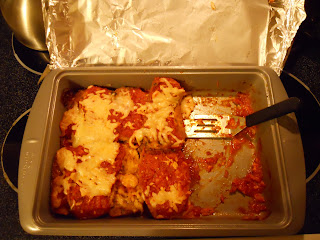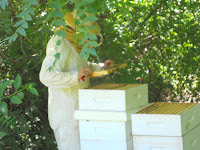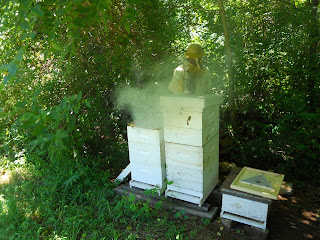We thought we wouldn't have much of a problem, since the cabin is not heated continuously, and we assumed the bugs were trying to find warmth. But last Friday, Pat came into the cabin and pulled his coat off the rocking chair (we leave some layers down at the cabin) and uncovered hundreds of them! We spent about an hour sweeping them up and shaking them off of things. We took off the slipcover and the bed clothes and shook them out, then swept them up and put them in a bucket. Pat transported the bucket of either dead or cold-torpor stink bugs up to a group of six very happy chickens! They put an end to our bug problem.
Hopefully next time, we won't find too many have crept back into the cabin.
This is one example of how a species can come into a new area and "take over." They were able to explode because they have left their natural predators behind in Asia. Why don't the birds just eat them? They probably did, but there were so many of them, and it is such a new food source, that they might not have been able to recognize them as a food source. OR, they may taste pretty bad (though our chickens didn't mind the taste!). Anyway, a predator may come to the forefront, something that has developed a taste for the stink bug, or their population may reach some kind of carrying capacity. But, it looks like they're here to stay. Sadly this is just one of the many alien invasive species that have come to North America and have upset the "natural balance," what is left of it.

















































